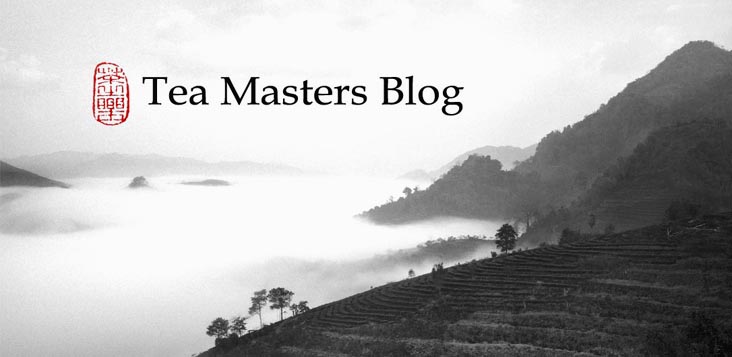With easy air travel to Taiwan, it's even possible to cut out Asian big city retailers and visit tea farmers near their plantations! Western tea fans visiting Taiwan can now easily purchase from the source, the original maker directly! This is probably the dream journey for many tea fans: visiting tea mountains and purchase tea from a farmer.
This is what J. has been doing the last 2 weeks approximately. Today he came to see me and I asked him to bring a couple of teas he purchased here. I should add that J. is quite an experienced drinker, as he works in a tea shop in the US that serves loose teas from all over the world.
A search of excellence is what Da Yu Ling and Lishan Oolongs are all about. Theses plantations are located above 2000 meters elevation. The trees grow under extreme conditions so that they would produce the finest High Mountain Oolong possible. A Da Yu Ling shouldn't disappoint.
J's brew had a darker yellow color, some dry to bitter notes and lacked flowery fragrances. Mine was lighter, but felt much more mellow, smooth and had an elegant flowery fragrance. The quality difference was obvious and I let J and his friend put words on it first. The different season isn't what was causing this roughness.
In a second match up, we brewed J's leaves again versus my Lushan Oolong. This other spring Oolong is, like J's, also packed in a plastic foil that says Da Yu Ling! The famer told me it's from Lushan, but packed it in this pack, because another customer wanted it packed like this. In this case, again, my leaves performed better, smoother than J's. This led us to have serious doubts about the actual origin of J's leaves.
This is a very familiar experience, I told J. I've met other tea travelers who felt disappointed by the Oolongs they purchased from farmers. For most customers, cutting out the middleman means that they are looking for a better price. That's the reason why farmers usually start with brewing their low quality leaves to retail customers, I think. If the customer is happy with the price and thinks the tea OK, then he can quickly make the sale. The farmer will only propose better leaves if the customer shows his disappointment with quality and his willingness to pay more. But if the buyer has never experienced a top quality Da Yu Ling, he is likely to be satisfied with lesser leaves.
Disintermediation (cutting out the middleman) works best with commodities, products that are easy to understand and identify. For regular teas, this might be the case, but I think that rare and fine Oolongs require the expertise of well trained tasters.
J mentioned a second tea he had purchased just yesterday, in Yingge: a 1980s raw loose puerh from Menghai tea factory. What a coincidence! I also have a loose puerh fitting this description in my selection. I was curious to compare both and we proceeded to make another parallel brewing (using only very few leaves).
 |
| 2 Loose puerhs |
 |
| Left: my 80s puerh. Right: J's |
J's brew is darker and his open leaves looked all slightly burned. My brew is lighter and some big leaves unfurl well and almost green again.
J's brew has a cooked puerh smell. Its taste is quite sweet and round, but with a short aftertaste. My puerh has more freshness, vibrancy. The aftertaste is long and lively.
The difference in both brews indicate that J's tea isn't what the seller claimed. It's a partially, lightly cooked puerh that tries to mimic a genuine 30 years old puerh. If you haven't had a real old sheng before, you wouldn't notice it as easily in this comparison.
 |
| Real sheng vs fake |
Free like a butterfly, know what you want and find the sources that provide the most satisfaction!
Thanks to J for sharing his teas and meeting me.












4 comments:
TInteresting. I hope J. wasn't too disappointed by these discoveries.
Thanks! This is good information to store away for the future.
Thanks for your comments.
J found the meeting very interesting and educational. I don't know how disappointed J felt (he didn't show too much disappointment to me). Anyway, I told him that this kind of experience is very common. It has happened to me in lots of instances, even after starting my blog and after taking tea classes! A few years of experience and even 10 years of experience may still not prevent you to be fooled by tea! There's absolutely nothing to be disappointed or ashamed about.
These are feelings to don't help to learn and face the facts. I believe you have to look at the situation from a positive point of view. You can rejoice at the fact that you have now found teas that are even better than what you had found previously!
With tea, we never stop learning new things. Nobody has all the answers. I continue to learn and even Teaparker, my tea master, continues to learn new things every day! And mistakes are part of the learning process.
Excellent points! I think I was projecting my own personality onto him.
Post a Comment